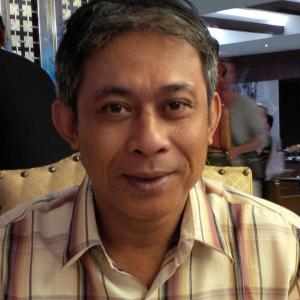A lack of science stories, insufficient training for journalists covering science-related topics, and communication barriers between scientists and journalists are all impediments to science journalism in the Global South, according to a 2023 study by researchers at James Madison University and University of the Punjab.
Indonesian science journalists face many of these obstacles. In addition to limited opportunities to publish science journalism in Indonesia, as many outlets don’t prioritize covering the beat, there can also be a lack of reliable data.
These issues notwithstanding, interest in science journalism in the country is growing, especially in the aftermath of the pandemic, said Melvinas Priananda, executive director of the Society of Indonesian Science Journalists (SISJ): “The COVID-19 pandemic is a starting point that everyone requires certainty, and they are interested in knowing science, [being] watchful to the surrounding environment [and staying healthy].”
I spoke with science journalists in Indonesia to better understand the state of science reporting in the country, its strengths and weaknesses, and what can be improved.
Challenges faced by science journalists
Journalists on the science beat don’t necessarily have a background in science. It’s critical, then, that they reach out to credentialed scientists to explain issues related to research, events or other developments they may be reporting on.
“I imagined journalists [should] approach their reporting with a scientific perspective, taking observations, analysis, and knowledge of issues into coverage, much like [scientists]. Though Indonesian journalism is not forwarding in that direction, such was my dream,” said Harry Surjadi, an environmental journalist and former ICFJ Knight Fellow.
In 2011, Surjadi created a communication channel that empowered people living in remote areas of Borneo to send news reports via text messaging to Ruai TV, a station in the provincial capital. The initiative also trained citizen journalists on how to use mobile phones to document issues such as illegal logging and illicit land clearing in the region.
Effecting change through their reporting is a further challenge for science journalists, Surjadi continued: “Convincing the Indonesian public, particularly policymakers, to adopt a logical scientific approach to policy implementation is a challenging assignment for science journalists.”
Just like reporters on other beats, science journalists must do the necessary research into the issues they’re covering to ensure their reporting is as comprehensive as possible for readers. A lack of readiness can result in overly simplistic coverage of what can be complex science-related topics.
“Usually, those [overly simplistic articles] are stories that highlight my research published without contacting me,” explained ecotoxicologist Wulan Koagouw, known for her research into paracetamol contamination in the waters of Jakarta Bay.
Technical terms and language, in particular, can trip journalists up. This can make conveying the intricacies of issues to the public even more challenging. “When a journalist references study findings and asks smart, high-quality questions, I know they are knowledgeable about the subject," said Koagouw.
The state of science journalism in Indonesia
Interviews with Priananda, Surjadi and Koagouw shed light on how science reporting has been effective in recent years, and the challenges that remain.
Examples of effective science reporting include:
- The public can take appropriate steps and improve decisions based on basic knowledge of journalists' reporting. For instance, during the height of COVID-19, newsrooms raised awareness about the importance of wearing masks, social distancing, washing hands with soap, and getting vaccinated.
- In examples such as the reporting on pollution in Jakarta Bay, Indonesian science journalists have at times successfully included strong analysis of science research for their audiences.
The growth of science journalism, noted Priananda, has led to everyday Indonesians having a better understanding of research, innovation and new technology in the news.
Among the challenges that remain today, however:
- Science data and research output can be difficult for science journalists in Indonesia to access.
- Data regarding science-related topics, if available, is cluttered and difficult for Indonesian journalists to understand.
- Indonesian journalists who lack the scientific background, knowledge, and experience to report on science sometimes are reluctant to contact scientists.
There is a lot to feel positive about when it comes to science journalism in Indonesia, too, I found through my conversations. Moving forward, it will be key for science journalists to keep the following in mind as they carry out their work:
- Science journalism is receiving greater attention from media editors and newsrooms.
- Science journalists must study the latest developments in science and technology to continue serving their audiences' needs.
- Highlighting how science-related topics are relevant to their lives helps the public better understand research, innovation and new technologies.
- Increasing journalists’ understanding of research can lead to stronger reporting, and in turn better raise awareness of the benefits of science and technology to society.
More reporting on scientific discoveries, health issues, climate change, and more will only further increase people’s interest and awareness, and lead them to make informed decisions in their daily lives around these critical issues.
Photo by Nanda Firdaus on Unsplash.


